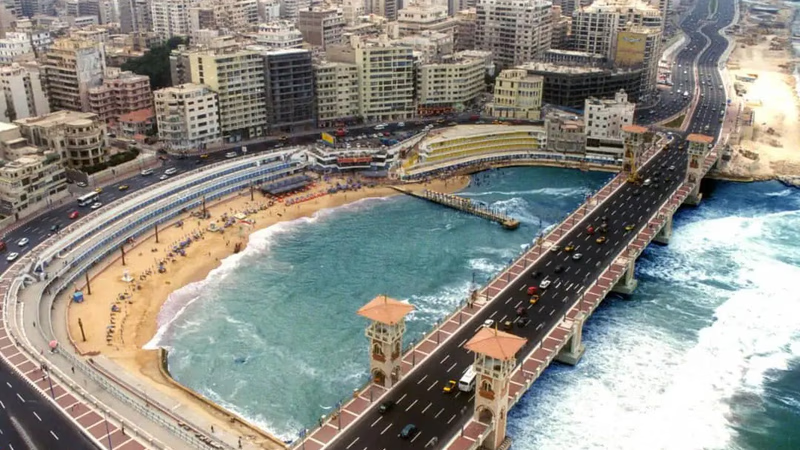
Cairo"s skyline showcases trade opportunities in Egypt. "
Egypt's capital city is Cairo, located in the northeastern part of the country. Cairo is not only the political capital but also the economic and cultural hub of Egypt. It is one of the largest cities in Africa and the Middle East, with a population of over 20 million people in the metropolitan area. Cairo is known for its rich history, ancient landmarks, and bustling city life. It is home to iconic attractions such as the Great Pyramids of Giza, the Sphinx, and the Egyptian Museum, which houses an extensive collection of ancient artifacts, including the treasures of Tutankhamun. The city also has modern infrastructure, including skyscrapers, shopping malls, and a vibrant nightlife.
Cairo is the capital of Egypt and it is the largest city in this country and a large population in this city is engaged in agriculture and livelihood in Cairo is often done through agriculture, of course, Cairo is one of the best immigrant cities in Egypt. Alexandria is another important city in Egypt, it has a lot of scenic space and is on the list of cities that are often a great option for tourism. Giza is a quiet city. It is a little strange built and the architectural atmosphere of this city is as if you have traveled to the last hundred years. Shabar al-Khaimah is a good and spectacular city. This city has a strong economic atmosphere, although, in this city, people try to consider the principles of proper living.
Located on the Mediterranean coast, Alexandria is Egypt's second-largest city. It has a population of over 5 million people. Alexandria has a significant historical and cultural heritage, with attractions like the Citadel of Qaitbay, the Catacombs of Kom El Shoqafa, and the Bibliotheca Alexandrina, a modern library built near the site of the ancient Library of Alexandria. Giza is a city on the western bank of the Nile River, adjacent to Cairo. It is most famous for being the site of the Great Pyramids of Giza, including the Pyramid of Khufu (Cheops), the Pyramid of Khafre, and the Pyramid of Menkaure. Giza is a popular tourist destination and also provides residential areas for locals.
Port Saeid is a very luxurious city with a renovated and unique atmosphere. This city has been the residence of famous people in the past years. Suez is unique in Egypt for investment, the city is divided into economic and commercial sectors and is on the list of best cities for investment. Aqsar and Mansoura are two cities that are close to each other, which can be a good choice for education, although the comfort of living in these cities may seem limited. As the capital and primate city of Egypt, the economy of Greater Cairo largely reflects that of the nation and, indeed it probably contributes half of the Gross Domestic Product. In spite of many calls for decentralisation of the bureaucracy, government is heavily concentrated in the capital, and it also contains most of the higher-order private sector services.
With the establishment of industrial zones in the new towns of Sixth of October and Tenth of Ramadan (30 and 50 km from the city centre respectively), Cairo has also become the focal point of most modern manufacturing. Finally, Cairo has a well-developed tourist economy, catering both to Western tourists and Gulf Arabs, and it also enjoys an important position as a regional centre for conferences.
Located on the southern tip of the Sinai Peninsula, Sharm El Sheikh is a popular resort city known for its beautiful beaches, clear waters, and vibrant coral reefs. It attracts tourists from around the world, particularly for diving and snorkeling activities. Sharm El Sheikh has a range of luxury hotels, restaurants, and entertainment venues. Situated on the east bank of the Nile River, Luxor is often referred to as the world's largest open-air museum. It was once the capital of ancient Egypt and is home to the impressive temples of Karnak and Luxor, as well as the Valley of the Kings and the Valley of the Queens, where many pharaohs and nobles were buried.
Paralleling the formal economy, Cairo also has an immense informal economy, made up of hundreds of thousands of small and micro-enterprises. The informal sector absorbs over half of the city’s labour force and informal employment is expanding at a faster rate than formal employment. Also, as estimated in the recent work of Lima’s Institute for Liberty and Democracy, informal investment in residential real estate in Greater Cairo is valued at over US$ 36 billion, representing 39 per cent of the city’s total
Aswan is a city located in the southern part of Egypt, near the border with Sudan. It is famous for its location along the Nile River and the Aswan High Dam, which has had a significant impact on Egypt's agriculture and energy production. Aswan is also known for its beautiful Nubian villages, temples such as Philae Temple, and the unfinished Obelisk. These cities, along with others such as Hurghada, Dahab, and Port Said, contribute to Egypt's vibrant urban landscape, tourism industry, and economic activities. Each city has its unique attractions, history, and cultural offerings, making Egypt a diverse and captivating destination for visitors.
-
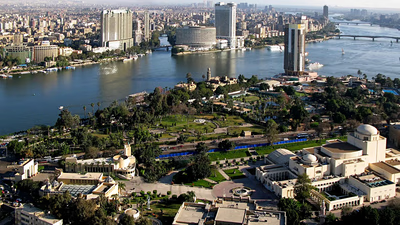
Egypt"s population exceeds 100 million, providing a vast labor force and consumer market for businesses. This demographic advantage allows companies to access a diverse talent pool and cater to a significant domestic market. The growing middle class and increasing disposable income present opportunities for both local and international firms to expand their operations. Companies contribute to job creation, addressing unemployment while boosting economic development. The corporate tax rate stands at approximately 25%, with personal income tax rates varying from 22. 5% to 34%. Sales tax has increased from 10% to 14%, while social security remains stable at around 40%. Egypt"s strategic location in northeastern Africa, bordered by Libya, Sudan, the Mediterranean Sea, Israel, and Palestine, enhances its trade potential.
The country"s rich cultural heritage and historical significance attract tourism and investment. Companies operating in Egypt not only generate revenue but also invest in employee training, enhancing workforce skills and employability. This investment fosters long-term economic growth and improved living standards for the population. "
-
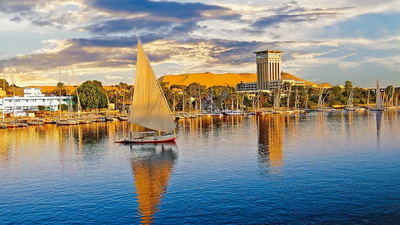
Egypt"s economy is diverse and strategically located, making it a vital trade partner in the Middle East. Key sectors include agriculture, manufacturing, services, and energy. The country imports a variety of goods such as agricultural products, machinery, chemicals, and consumer items. Trade with Egypt supports economic growth by facilitating development projects and enhancing market access. Its geographical position near the Suez Canal further boosts its importance in global trade routes. Despite political challenges and external pressures, particularly from the US regarding Iran-Egypt relations, Egypt remains a promising destination for exports due to its large market size and economic potential. The country’s non-oil export strategies are crucial for expanding trade relations with regional partners like Iran. While there are hurdles such as tariffs and regulatory issues, ongoing reforms aim to improve the business environment for foreign investors.
Overall, engaging in trade with Egypt not only benefits individual economies but also contributes to regional stability and development. "
-
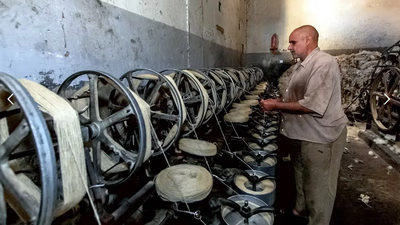
Egypt stands as a pivotal economic force in the MENA region, characterized by its strategic location and diverse economy. The country boasts a well-developed financial sector, with Cairo serving as a hub for banking and financial services. The Egyptian Exchange attracts both domestic and international investors, reflecting the country"s robust economic framework. Egypt"s active participation in international trade is underscored by its membership in the WTO and various trade agreements with key partners like the EU, Arab nations, the US, and China. The Suez Canal enhances Egypt"s significance in global maritime trade. Recent economic indicators show positive growth trends in import-export sectors and foreign direct investment (FDI), alongside ongoing government reforms aimed at improving the business environment. Despite challenges such as foreign debt and fluctuating currency values, Egypt"s commitment to attracting investment in energy, infrastructure, and manufacturing remains strong. Additionally, tourism plays a crucial role in the economy, contributing significantly to foreign exchange earnings.
Overall, Egypt"s strategic initiatives position it favorably within regional trade dynamics. "
-

Cairo, the capital of Egypt, serves as the political, economic, and cultural center of the nation. With a population exceeding 20 million, it is one of Africa"s largest cities. Cairo is renowned for its historical landmarks such as the Great Pyramids of Giza and the Egyptian Museum. The city boasts modern infrastructure alongside its rich heritage. Alexandria, Egypt"s second-largest city, is known for its Mediterranean charm and historical sites like the Citadel of Qaitbay. Giza is famous for its pyramids and attracts numerous tourists. Other notable cities include Port Said, recognized for its luxurious atmosphere; Suez, a hub for investment; and Luxor, often called the world"s largest open-air museum due to its ancient temples and tombs. The Greater Cairo area significantly contributes to Egypt"s GDP and houses most private sector services.
Despite calls for decentralization, government functions remain concentrated in Cairo. The city also has a thriving informal economy that employs a large portion of its workforce. Aswan, located near Sudan, is known for its agricultural significance due to the Nile River and features attractions like Nubian villages and temples. Overall, Egypt"s cities offer diverse economic opportunities and cultural experiences. "
-
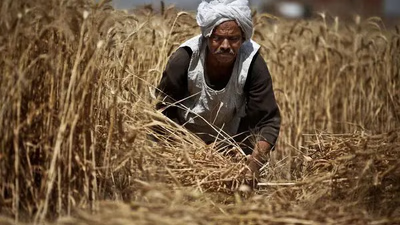
Egypt"s economy is significantly influenced by agriculture, particularly due to the fertile Nile River, which supports the cultivation of crops like cotton and wheat. The Suez Canal is another critical economic asset, generating substantial revenue through tolls from ships. In 2020, Egypt"s GDP grew by 0. 26%, with a total GDP of $332. 90 billion and a notable contribution from the agricultural sector, estimated at over 32%. The country also produces significant amounts of oil and gas, with daily oil production at 688,100 barrels and annual gas production at 76. 40 billion cubic meters. Exports primarily consist of crude oil, petrochemicals, textiles, and hardware.
The manufacturing sector is diverse, encompassing textiles to automotive production. Foreign direct investment (FDI) is actively sought to enhance industrialization and economic growth. Remittances from Egyptians working abroad play a crucial role in supporting domestic consumption. The services sector, including banking and telecommunications, is vital for economic stability. Recent growth rates indicate a positive trend in GDP per capita and various sectors such as agriculture and construction are also experiencing growth. Egypt"s rich cultural heritage boosts tourism, further contributing to the economy by generating foreign currency. "
-
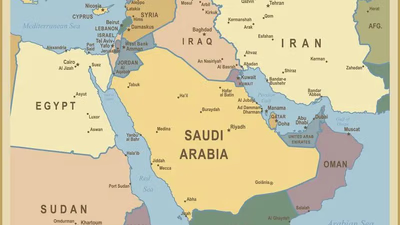
Egypt"s geographical position in northeastern Africa, bordered by Libya, Sudan, the Mediterranean Sea, Israel, and Palestine, influences its climate and economy. The northern region enjoys a temperate climate due to the Mediterranean, while the eastern and western deserts experience extreme temperatures. Economic indicators show a mixed performance; construction contributes 1% to GDP, while mining has seen a 10% growth. The public transport sector also shows a positive trend with a 4% increase. However, the current account balance has faced challenges with a negative GDP situation in recent years. Import and export sectors have shown growth rates of 7% and 3%, respectively. Despite these fluctuations, foreign debt has risen by 9%, and tax rates have increased significantly over time. Cultural traditions in Egypt are evolving, reflecting the complexities of its society. "
-
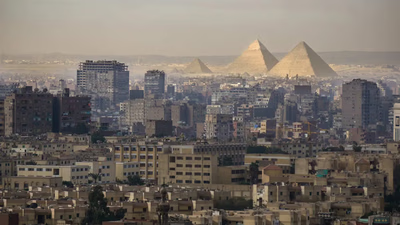
Egypt"s economy is characterized by a GDP of $332. 90 billion, with significant contributions from agriculture, oil, and gas sectors. Approximately 28 million people are employed, with a notable increase in participation rates. The agricultural sector accounts for over 32% of GDP, while oil production stands at 688,100 barrels per day and gas production reaches 76. 40 billion cubic meters annually. Key exports include crude oil, petrochemicals, cotton, textiles, and hardware. Imports primarily consist of machinery, equipment, food products, chemicals, and timber. The annual GDP growth rate is estimated at 7.
70%, with notable increases in various sectors such as agriculture (12%) and mining (10%). Egypt operates under a republican political structure where the president is elected every six years by popular vote. The People"s Council (Majlis al-Shabi) consists of 454 members; most are elected by the public while others are appointed by the president. The prime minister is appointed by the president and leads the cabinet. An advisory council known as Al-Shura also plays a role in governance with its own elected members.
-
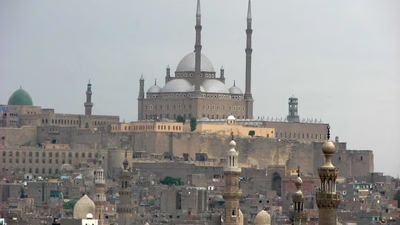
Egypt"s rich cultural heritage is deeply rooted in its ancient civilization, characterized by iconic pyramids and temples. The country celebrates its pharaonic past through various festivals and museums, while the Arabic language, particularly the Egyptian dialect, plays a crucial role in daily life. Egyptian cuisine reflects diverse influences, featuring dishes like ful medames and koshari. Recent improvements in healthcare and economic structures have enhanced the quality of life for many Egyptians. The political landscape remains stable, with efforts to minimize corruption and improve social security. However, strict laws govern social interactions and respect for cultural beliefs. Egypt"s economy is diverse, with significant contributions from agriculture and industry, particularly in cement and food production. Despite potential trade opportunities with countries like Iran, political tensions hinder full economic collaboration. Family values are central to Egyptian society, emphasizing strong kinship ties and traditional gender roles.








